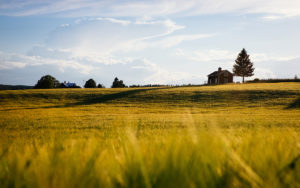Episode 36: 3 Reasons to Do Groundwork With Your Horse

A big part of training is establishing communication in a safe way. In this episode, I share three reasons why you should do groundwork. I share how to safely work with horses at different stages and one of the biggest aspects of communication which is reading body language. I also introduce a new segment with equine veterinarian Dr. Monty McInturff.
Over the years, I’ve spent a lot of time with great veterinarians. There is routine care, maintenance, and early diagnostic care. Seeing so many horses in training is kind of like being a sports coach. If I saw something off, a vet trip would be needed. Anytime you can spend time at vet clinics watching what is going on is a huge learning opportunity.
When I was talking to the folks at Equithrive and they said they had lots of connections with vets, it was super exciting to me to think that I could continue my education through this partnership with them. This week I am bringing you a new segment called: On Call with Dr. Monty. Dr. Monty has been an equine practitioner for over 30 years and specifically focuses on the equine athlete.
“Look at ground work as a place where you can study and read your horses body language, and your horse can study and read your body language.” Stacy Westfall Click To TweetShow Notes:
[01:12] Stacy shares an entertaining listener voice mail where he acted out her podcast instructions while listening at an airport.
[02:12] A deep dive into the horses body. The first thing I go to is a horse in a round pen. Thinking about ground work makes it easier to think about the horses body.
[03:32] Three reasons why you should do ground work: 1. It’s the best place to read the horses body. 2. It’s the best for your horse to learn to read your body. 3. You can teach emotional control.
[04:10] Picture yourself standing in the middle of a 60 foot round pen. A wild horse will be further away from you. As a handler, you read the body language and decide where to move while the horse is reading your body language.

[07:15] There is a conversation happening between the horse and rider even if it just looks like a horse and rider walking towards a stall.
[07:45] Your horse is reading your body language and what he is allowed to do and not allowed to do.
[08:31] I want you to think about the power that comes in having the horse away 15 or 20 feet away from you. Now you have a complete picture of the horse’s body.
[09:33] Think about how the conversation feels different when you and the horse really respect each other’s space.
[11:04] When horses are in our space but ignoring us, it’s a problem.
[12:04] Earn the right to be in your horse’s space and have the horse earn the right to be in your space by being respectful of you.

[14:27] When your horse is 20 feet out, you can really start to see what the horse is looking at and the world through his eyes.
[16:20] If your horse isn’t interested in you, he’s not going to be reading your body language.
[16:47] Teaching emotional control is the beauty of groundwork. I’m going to do this with a horse that’s a little bit further away from me.
[20:23] I think it’s the desire for closeness that brings us in too close to our horses bodies too often. This can accidentally set us up for a dangerous spot.
[21:59] When your horse is closer than four feet, you need a very clear working system, because there is a danger zone.
[23:09] Look at ground work as a place where you can study and read your horses body language, and your horse can study and read your body language. It’s also an amazing place to teach emotional control to the horse.
[23:36] Are you doing enough groundwork to allow your horse to read your body language? Can you adjust the working Zone you have around your horse?

On Call with Dr. Monty
[31:48] The owner of Equithrive approached Dr. Monty about 10 years ago to ask him to try a product. Dr. Monty wasn’t interested in an oral joint supplement, but the owner of Equithrive gave him a sample.
[32:54] He gave a trainer the product to try. A couple months later the trainer was asking for more. He said it really worked great for his horses.
[33:42] Taking the product twice a day had 19 or 20 year old horses acting like they were 9 or 10. They had more endurance and were more active.
[34:00] Dr. Monty started using it on older horses, and now, it’s the only oral joint supplement that he recommends.
[35:18] Stacy uses the supplement on Popcorn and noticed dramatic effects. The product turns down the production of inflammatory enzymes.
Links and Resources:
Equithrive Use code ‘Stacy’ for 10% off and free shipping
Popcorn’s ear problem explained: https://www.merckvetmanual.com/ear-disorders/diseases-of-the-pinna/equine-aural-plaques
1 Comments
Leave a Comment
SUBSCRIBE TO THE PODCAST HERE:





YOURS FREE
WHY IS MY HORSE...?




I love groundwork because it is so much easier to teach maneuvers on the ground first such as side passing,and moving the hind quarters, and then translate those ques when you on their back. Plus ground work is also a great way to evaluate how your horse is feeling before you get on to ride. I also notice when I see it work on the ground, I feel safer and more confident when I am on her back.